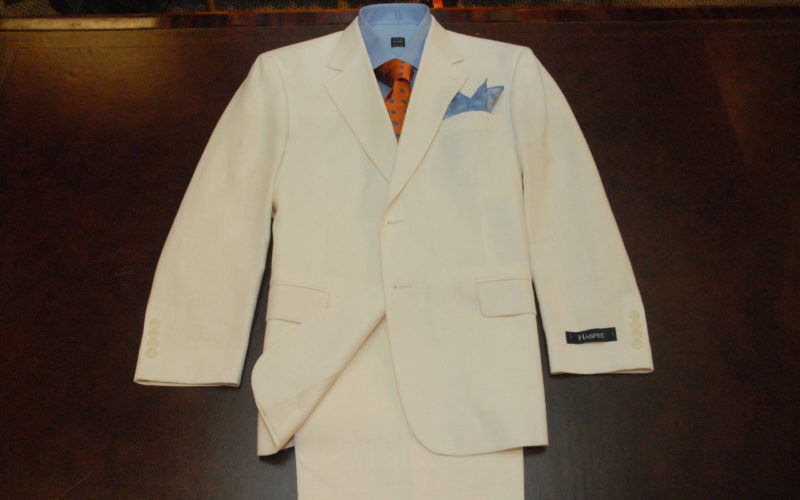Q. I can never achieve the same look it had when I first purchased my linen suit, as I can for my cotton and wool clothing. How much wrinkling is acceptable in linen clothing?
A. As the really hot weather of summer approaches, this is certainly an appropriate question. For many people, the two words, “summer” and “linen” are nearly synonymous. All the other natural clothing materials (cotton, silk, wool, and leather) can be worn all year ‘round, but linen is strictly limited to warm-weather dressing. As you suggest, linen’s main drawback is that it wrinkles (a lot). But then, among some of the world’s fashion snobs, this quality is actually often a plus. They like that it helps point out that they’re wearing distinctive linen, rather than more ordinary cotton.
Some amount of wrinkling is expected and acceptable in linen clothing. It can certainly show a few ripples – perhaps the equivalent of other clothing after a day’s wearing, but not a series of folds and noticeable creases – so, NOT the equivalent of yesterday’s clothing thrown in a pile or slept in. When the fabric begins to show that amount of messiness and/or loses its shape, you will want to iron your linen clothes, or have someone do it for you. Because it wrinkles so easily and requires ironing, some men would never consider buying linen clothing, especially trousers.
On the other hand, there are those men who like linen especially because 1.] so few people wear it; 2.] it adds variety to their wardrobes; 3.] it makes a subtle fashion statement; and 4.] it adds character to their dressing style. They think of the wrinkles as a way of emphasizing these not-so-obvious distinctions.
A few of linen’s special qualities that make it the darling of the fashion-aware crowd are:
- Its light weight
- Its breathability
- Its “cool” qualities (in both senses of the word)
- Its interesting slight texture by way of its weave (small slubs/bumps)
- Its uniqueness and distinctiveness (not-overly-common)
- Besides 100%-linen garments, it also works in fabric blends mixed with wool, silk, or cotton
- Its not-too-expensive price (more than cotton, usually less than silk or wool).
While an all-linen suit might come off as a bit theatrical, a variety of linen garments are nice to own, such as dress trousers, casual pants, upscale sport shirts, and summer pastel ties. They come in all price ranges and in all colors, from white and light to navy and black. I saw a handsome light blue Italian sport coat from Canali that would be a great addition to a man’s sport jacket and blazer rotation; it was a blend of 68% wool, 20% silk, and 12% linen. Even this small amount of linen can affect the texture.
Widely known as a high quality (even a rather elegant) fabric, linen works wonderfully for both dressy and also casual summer clothes. Its wearing time is not quite as narrowly restricted to “from Memorial Day to Labor Day” as are many white garments, but it still is somewhat closely-aligned with those dates . . . in other words: Right now!
Please send your men’s dress and grooming questions and comments to MALE CALL: Lois.Fenton@prodigy.net









